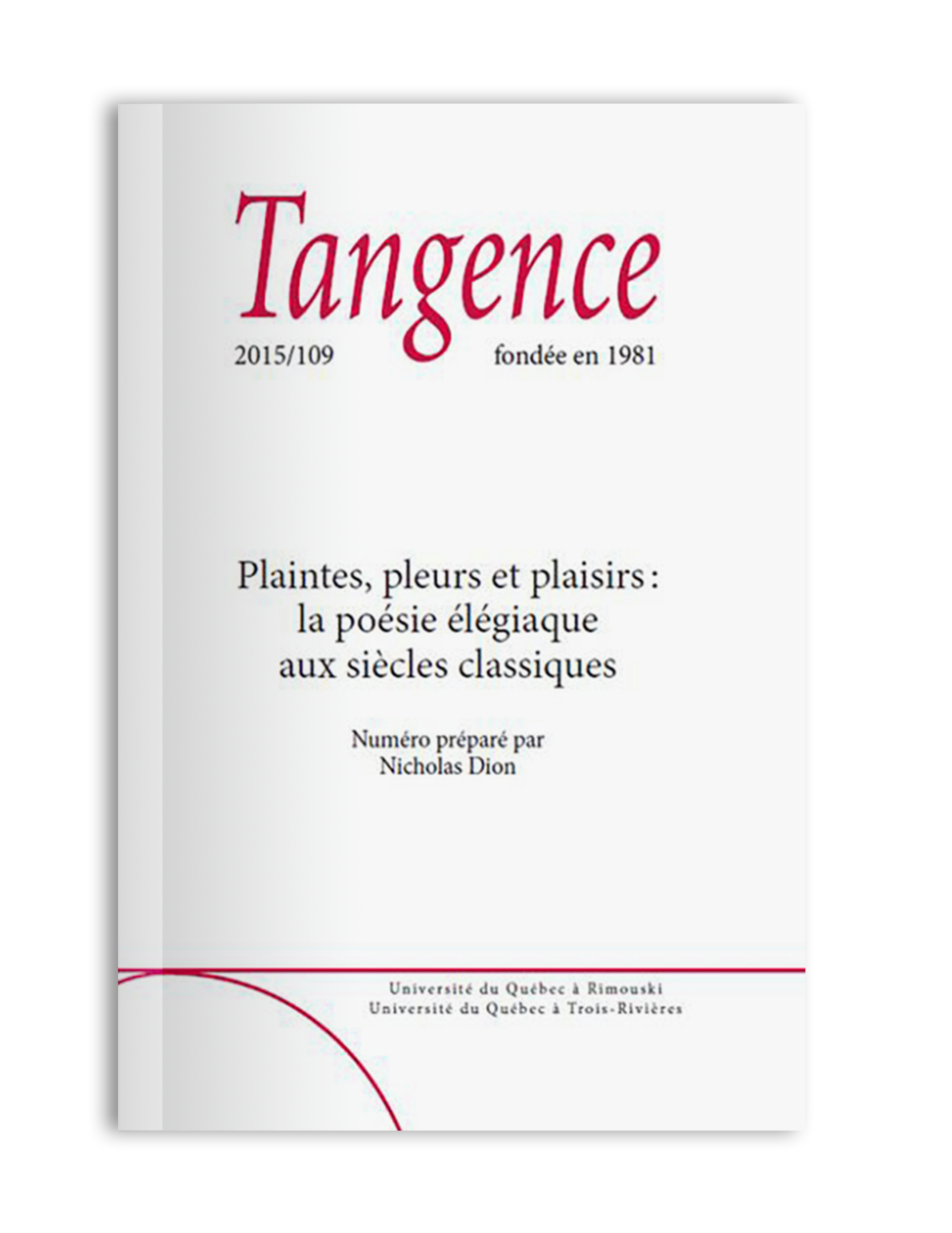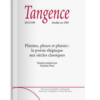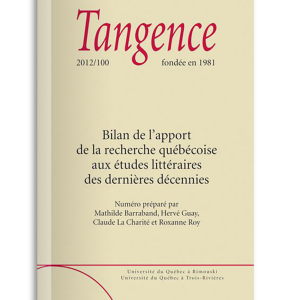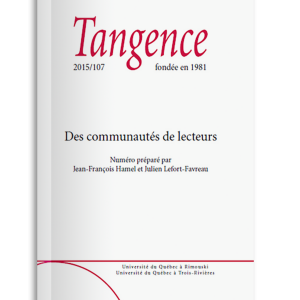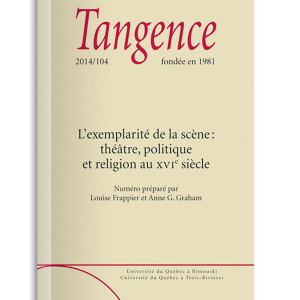N° 109 / 2015
Plaintes, pleurs et plaisirs : la poésie élégiaque aux siècles classiques
Marie-Claire Chatelain
Le modèle ovidien de l’élégie au XVIIe siècle
Le XVIIe siècle, traitant du genre de l’élégie, l’a naturellement rapporté au modèle antique des Élégiaques latins, et plus particulièrement au modèle ovidien, prééminent dans la traduction comme dans la critique. En effet, Ovide, dans l’expression des passions, l’emporte sur Catulle et Properce pour le naturel et la facilité de son style, à l’égal de Tibulle. S’il est parfois préféré à ce dernier, c’est pour la variété qu’il introduit dans le genre. L’influence élégiaque d’Ovide s’exerce assez traditionnellement sur l’épître, contribuant longtemps à une proximité entre les deux genres, distingués par la plus grande liberté de sujet et de registre que possède l’épître. C’est précisément par cette variété propre au genre épistolaire que Théophile, dans un esprit tout ovidien, renouvelle l’élégie. Dans cette palette, l’esthétique galante du milieu du siècle privilégie l’élégie enjouée et railleuse, nourrie des œuvres érotiques, et proche cette fois des petits genres en vers comme les madrigaux et les stances. La fin du siècle réinterprète ensuite cette même forme galante en élégie passionnée qui, conjoignant veine ludique et veine déplorative des poèmes ovidiens, et cultivant l’effet d’illusion d’une possible authenticité du sentiment, se veut l’expression naturelle du cœur amoureux.
The Ovidian model of the seventeenth century elegy
The seventeenth century, when dealing with the elegy genre, naturally referred to the Ancient model of the Latin Elegiacs, and more particularly, to the Ovidian model, preeminent in translation as in criticism. Indeed, Ovid, in expressing his passions, is superior to Catullus and Propertius for both the naturalness and facility of his style, as is Tibullus. If he is sometimes preferred to the latter, it is because of the variety he introduces into the genre. Ovid’s elegies influenced the epistle in a rather traditional manner, contributing for a long time to the likeness between the two genres, which were differentiated by the epistle’s greater freedom of subject and register. It is precisely by means of this epistolary variety that Theophilus, in a truly Ovidian spirit, renewed the elegy. Here, the mid-century galant aesthetic privileges the playful and mocking elegy, fed by erotic works now resembling small verse forms such as madrigals and stanzas. The late seventeenth century then reinterpreted this same galant form as the passionate elegy which, combining the playful and mournful veins of Ovidian poems and cultivating the illusion effect of possible authenticity of feeling, offers itself as the natural expression of the amorous heart.
***
Stéphanie Loubère
« Musa levis gloria magna » : la recusatio chez les poètes élégiaques des Lumières
Les cheveux flottants, l’élégie a traversé les siècles de sa démarche inégale, et fait résonner ses chants déliés sans jamais se fixer en un lieu. Comme son inspiration, ses inflexions sont vagabondes mais reconnaissables à leur étrange façon d’imposer leur légèreté avec une morgue discrète. Peu de formes poétiques ont poussé aussi loin l’art de cultiver l’indécision sur l’ambition qu’elles poursuivent : à l’âge classique, l’élégie reste le genre insaisissable apparu lorsque les poètes antiques ont brigué une gloire en dehors de la grande tradition héroïque et donné au roman du cœur ses lettres de noblesse poétiques. Ses diverses métamorphoses et les débats qui ont accompagné sa survie littéraire n’ont jamais effacé cette ambiguïté constitutive, qui fait d’elle un genre en quête de reconnaissance dans un système de hiérarchie qu’elle contribue, de par son existence même, à renverser. C’est ainsi qu’au XVIIIe siècle, l’élégie a participé de près à l’effervescence problématique de la poésie, en un siècle dont la métromanie peut se comprendre à la fois comme signe d’une vigueur et comme symptôme d’un déclin. Dans ce contexte, l’élégie a focalisé un certain nombre de questions qui renvoient plus ou moins directement à la « crise de la poésie » qui affecte le siècle.
Musa levis gloria magna : the recusatio in the elegiac poets of the Enlightenment
Hair unbound, the elegy has crossed the centuries with an uneven step, its nimble melodies reverberating but never confining themselves to a single place. Its inflections, like its inspiration, are erratic but discernible for their odd way of imposing their gracefulness with a discrete hauteur. In few poetic forms has the art of cultivating indecision about the objective pursued been taken so far : in the Enlightenment, the elegy remains the elusive genre that appeared when the poets of Antiquity sought glory outside the great heroic tradition and accorded the romance a poetic status. Its various metamorphoses and the debates accompanying its literary survival have never erased that constitutive ambiguity, making the elegy a genre seeking recognition in a system of hierarchy that its very existence helped overthrow. Thus, the elegy was an important factor in the problematic effervescence of poetry in the eighteenth century, a time when metromania was understood as both a sign of vigor and a symptom of decline. In this context, the elegy focused on a certain number of questions that refer, more or less directly, to the « crisis of poetry » that marked the century.
***
Éric Van der Schueren
L’éclat, le gémissement et la plainte. De l’oraison funèbre classique ou de l’impondérable élégie en prose (Bossuet et Fléchier)
La plainte a trouvé, dès l’Antiquité grecque, sa forme fixe en poésie dans l’élégie. Mais elle ne lui appartient pas en propre et a contaminé, depuis l’Antiquité, les genres en prose. Dans la France classique, le premier d’entre eux semble être l’éloquence funèbre, où la déploration se mêle à l’élévation spirituelle de son public. Or, dans la suite des prescriptions de Cicéron, toujours admises alors, la poésie et ses ornements ne peuvent se retrouver dans la prose. Malgré cette injonction répétée, sinon respectée, Bossuet et Fléchier, appelés à faire l’oraison funèbre de telle ou telle grande figure défunte de leur temps, n’hésiteront pas à recourir aux tonalités et aux moyens de l’élégie, tout en respectant les contraintes propres à l’éloquence dans son absolu mais aussi à la pratique d’un genre qui s’inscrit d’abord dans un rituel chrétien et eucharistique. Cette difficile négociation entre prestiges poétiques et prescriptions taxinomiques de l’éloquence sacrée est ici analysée, à partir de certains textes comme de leurs commentateurs du XVIIIe siècle.
The cry, the moan and the lament. On the classical funeral oration or the imponderable prose elegy (Bossuet and Fléchier)
In ancient Greece, the lament was first established in poetry as the elegy. It did not belong to poetry as such, however, and has contaminated prose genres since Antiquity. In eighteenth-century France, the first elegy was apparently the funeral oration, where the lament helped in the public’s spiritual elevation. Now, following Cicero’s prescriptions, always admitted at the time, poetry and its ornaments had no place in prose. Despite this repeated, if not respected, injunction, Bossuet and Fléchier, when called upon to pronounce the funeral oration for some deceased figure or other, turned without hesitation to the tones and ways of the elegy, while respecting the constraints that characterized eloquence in its absolute refinement and a genre which was first practiced as a Christian and Eucharistic ritual. This difficult negotiation between poetic prestige and the taxonomic prescriptions of sacred eloquence is analyzed here based on certain texts and their eighteenth-century commentators.
***
Kim Gladu
Le débat sur le style pastoral au XVIIIe siècle : Madame Deshoulières, modèle de l’élégiaque galant
La querelle sur le genre pastoral, qui occupera la critique des années 1685 à 1730, suppose une entreprise de redéfinition générique selon laquelle les théoriciens chercheront de nouveaux modèles pouvant exemplifier la nouvelle pastorale française et galante qu’ils envisagent. C’est ainsi que la réception critique qu’on fera des œuvres de Madame Deshoulières participera au développement d’un style champêtre moderne qui sera pleinement investi par les poètes de la fin du siècle. Dans cette optique, on verra s’affirmer un goût renouvelé pour l’élégie, genre généralement délaissé dans la première moitié du siècle, qui accompagnera cette fois la vogue en faveur d’une poésie sentimentaliste. Deux facteurs semblent alors avoir contribué à faire de Madame Deshoulières un modèle dans ce domaine : d’abord, elle constitue une figure marquante de ce passage du genre de l’élégie vers un mode élégiaque adossé à l’esthétique galante et rattaché à une promotion des genres mineurs ; ensuite, les qualités de naturel et de délicatesse qu’on accorde au style de la poétesse ont favorisé sa mise à profit dans le cadre d’une revalorisation de la sensibilité servant désormais de socle à la poésie pastorale en général et à l’élégie en particulier.
The debate on the pastoral style in the eighteenth century : Madame Deshoulières, model of the galant elegiac poem
The quarrel about the pastoral style, which was a focus of criticism from 1685 to 1730, supposed a major generic redefinition, where theoreticians looked for new models to exemplify the new French pastoral and galant mode they envisioned. Accordingly, the critical reception of the works of Madame Deshoulières contributed to the development of a modern pastoral style that would be widely practiced by poets in the late eighteenth century. From this perspective, one notices a renewed taste for the elegy, a genre generally neglected during the first half of the century, which now accompanied the vogue for sentimental poetry. Accordingly, Madame Deshoulières became a model in this area for two reasons : first, she was a leading figure during this passage from the elegy genre to an elegiac mode based on the galant aesthetic and associated with a promotion of minor genres ; and second, the qualities of naturalness and delicacy imputed to the poetess’s style were useful for reevaluating the sensibility that was henceforth the cornerstone of pastoral poetry in general and the elegy in particular.
***
Massimiliano Aravecchia
De la Caserne au volcan : les Poésies érotiques de Parny entre XVIIIe siècle et modernité
Malgré la renommée qui l’a accompagné de son vivant, Évariste Parny (1753-1814) demeure un auteur oublié de nos jours. Parmi les causes de cet oubli, la condamnation que les poètes romantiques (notamment Lamartine) ont prononcé contre la volupté et l’impiété de ses œuvres tient une place de choix. Néanmoins, ses Poésies érotiques (1778) informent à bien des égards l’évolution de la poésie lyrique à la frontière entre Ancien Régime et XIXEe siècle. L’amalgame de biographie et de fiction annonce chez Parny la problématique définition du sujet lyrique propre au romantisme ; en outre, l’insistance sur une destinataire unique et les traits d’exotisme de son œuvre constituent autant d’éléments qu’exploiteront les poètes du XIXEe siècle. L’originalité majeure des Poésies érotiques repose essentiellement sur le renouveau du genre élégiaque : à travers l’addition d’un livre d’« Élégies », le poète met en perspective son expérience amoureuse ; il ouvre ainsi le « chant du moi » à une temporalité qu’ignorait la poésie « fugitive » du XVIIIe siècle et qui prélude au topos romantique de la fuite du temps.
From La Caserne to the volcano : Parny’s Poésies érotiques between the eighteenth century and modernity
Despite the fame he enjoyed during his lifetime, Évariste de Parny (1753-1814) is now a forgotten author. Chief among the reasons for this neglect are the sensuality and impiety the Romantic poets (Lamartine in particular) condemned in his works. Nevertheless, his Poésies érotiques (1778) informed in many ways the evolution of lyrical poetry at the frontier between the Ancien Régime and the nineteenth century. The mix of biography and fiction in Parny’s work signals the problematic definition of the lyrical subject unique to Romanticism ; furthermore, the insistence on a single reader and the exoticism of his work constitute elements that nineteenth-century poets would go on to exploit. The striking originality of Poésies érotiques rests essentially on the renewal of the elegiac genre : throughout the added book of « Elégies », the poet places his amorous experience into perspective ; he thus opens the « song of myself » to a temporality that was absent in the « fugitive » poetry of the eighteenth century and that presages the Romantic topos of the passage of time.

